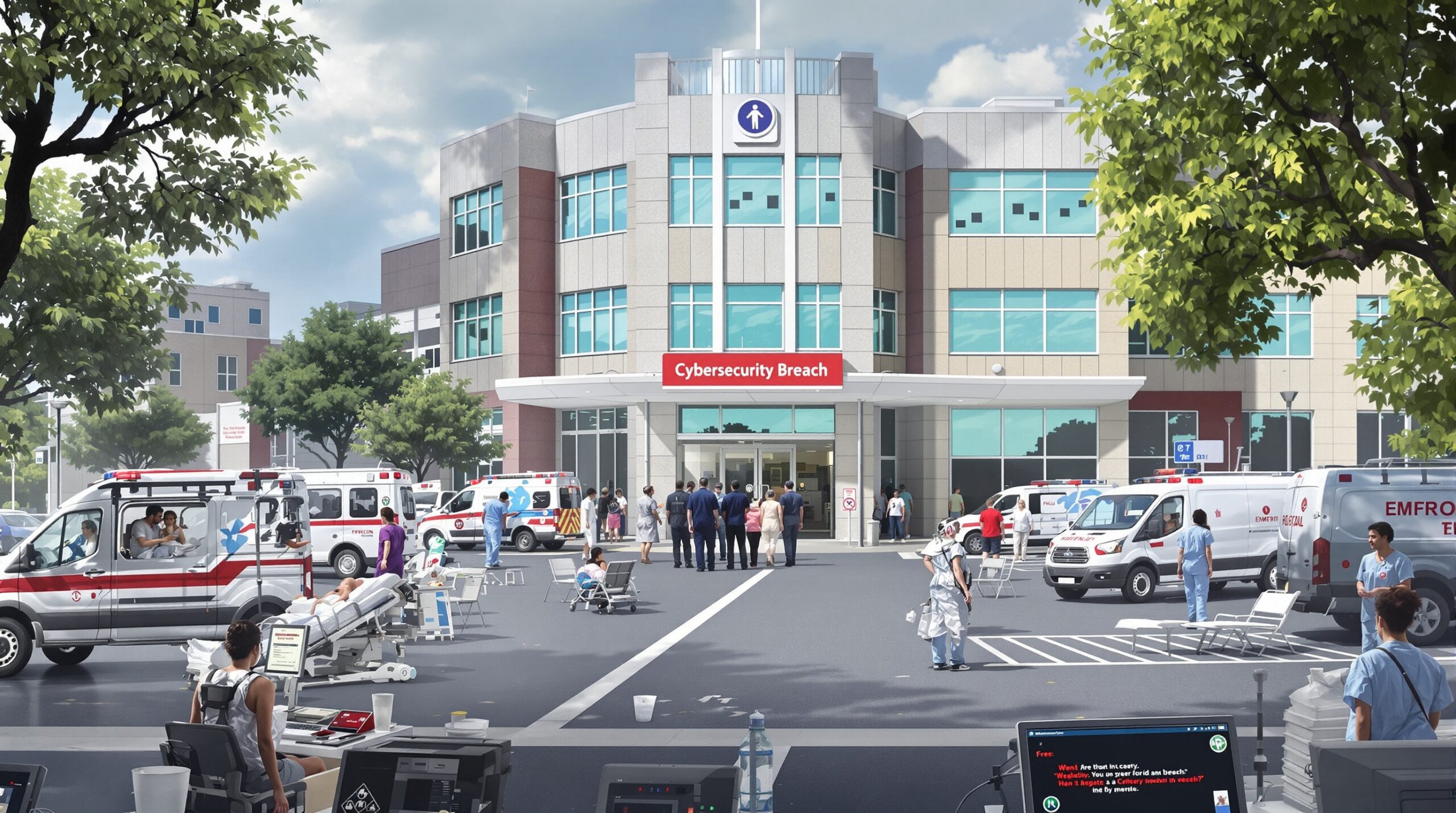A major hospital network suffered a devastating cyberattack, triggering immediate patient diversions and revealing vulnerabilities in essential healthcare infrastructure. This breach disrupted medical services and reignited national concerns about protecting healthcare organizations from digital threats. Widespread operational interruptions illuminated the critical interdependence between technology and patient care.
The Cyberattack: Unfolding a Multilayered Crisis
The intrusion started when attackers infiltrated network systems through malicious emails containing malware-laced attachments. Once the malware gained access, it rapidly disabled crucial hospital functions, including electronic health records (EHR) and internal communications. Staff soon found themselves unable to access patient charts, appointment schedules, or real-time laboratory results. With digital tools compromised, key clinical processes stalled within minutes of the attack.
As IT teams struggled to identify the breach source, contingency plans relied upon decades-old paper-based workflows. These manual methods delayed patient intake, lengthened wait times, and created bottlenecks throughout the emergency department and critical care units. Hospital leadership declared a code black, moving quickly to secure patient safety and prevent loss of life. Immediate public notifications informed local ambulance services and partner clinics to reroute incoming cases.
Patient Diversions: An Escalating Chain Reaction
With hospital IT systems disabled, health professionals could not verify identities, review allergies, or cross-check medication histories electronically. This loss of basic functionality made it unsafe to admit new patients, especially for time-sensitive emergencies. Ambulances were redirected to alternative facilities, some many miles away, causing treatment delays for trauma, stroke, and heart attack cases.
Transfer protocols, normally managed in seconds with central scheduling software, became hours-long processes. Receiving hospitals quickly reached capacity. Overflow ambulances experienced crowded ERs and resource shortages throughout the metropolitan region. Some patients, frustrated and anxious, left before being seen. These diversions strained every aspect of the regional healthcare system.
Underlying Vulnerabilities in Critical Infrastructure
This cyberattack revealed underlying vulnerabilities that affect many healthcare organizations worldwide. Hospital networks increasingly depend on interconnected systems that unite medical devices, diagnostic labs, billing software, and facility management platforms. Each entry point becomes a potential vulnerability, especially if cybersecurity best practices are not robustly implemented or regularly updated.
Legacy technology and budgetary constraints have left some hospitals running outdated operating systems without current security patches. Cybersecurity often receives less funding compared to clinical hardware and patient care initiatives. Many facilities lack specialized personnel trained to detect or respond to sophisticated threats. Ransomware attacks have soared as hackers realize that healthcare may pay quickly to restore life-saving operations.
Impacts on Patient Care and Safety
Service disruptions directly affected patients, resulting in delayed diagnostic results, missed prescriptions, and postponed surgeries. The absence of integrated health records poses acute safety risks, especially during trauma situations, where rapid information access can be life-saving. Doctors and nurses, unable to rely on usual decision-support tools, faced greater stress and a higher likelihood of medical errors.
Family members struggled to get reliable updates on loved ones. Communication breakdowns prevented coordination among care teams. Some patients experienced duplicative tests as the paper trail could not keep up with real-time needs. Trust in the hospital system waned as patients realized the full extent of the digital shutdown. These impacts underscore the real-world implications of cybersecurity lapses in healthcare environments.
Exposure and Theft of Sensitive Data
Beyond service disruption, attackers reportedly exfiltrated gigabytes of sensitive data, including names, Social Security numbers, and medical records. Data theft increases the risk of identity fraud and potential blackmail for people whose confidential records are compromised. Hospitals face costly regulatory penalties if an investigation determines negligence or inadequate safeguards helped facilitate the breach.
Health organizations must notify affected patients, provide credit monitoring, and conduct forensic analyses to understand the attack’s source and scope. Public perception and reputational harm may continue for months or years after the breach itself. Regulatory inquiries and potential lawsuits amplify institutional stress and complicate ongoing recovery efforts.
Government Response and Regulatory Gaps
Federal agencies immediately contacted impacted hospitals, providing emergency cyber response teams and technical investigation resources. While mandatory breach notifications provide some transparency, policymakers acknowledge that current regulations offer incomplete protection from evolving threats. The Health Insurance Portability and Accountability Act (HIPAA) focuses mainly on data privacy rather than security resilience or rapid remediation.
Most hospitals need guidance in maintaining robust defenses, such as 24/7 threat monitoring, incident response training, and timely vulnerability patching. Lawmakers face the challenge of encouraging robust security measures without placing excessive financial burdens on financially strained hospitals. State-funded programs and public-private partnerships are being examined to fill existing gaps while minimizing disruption to patient care.
Lessons for the Healthcare Sector
This incident reinforces the reality that healthcare delivery depends on digitally interconnected systems as never before. Hospitals must treat cybersecurity as a core safety and patient care issue, not merely an IT concern. Comprehensive risk assessments, regular penetration testing, and workforce education programs are essential to minimizing attack surfaces and improving detection of unusual activity.
Strong backup protocols, redundant communication channels, and clear plans for manual operations help maintain resilience during digital crises. Hospitals should build coalitions with regional partners and law enforcement to share intelligence and coordinate response plans. Only a unified, collaborative approach will protect the most vulnerable patients and save lives in future digital emergencies.
Moving Forward: Building a Resilient Future
The hospital network’s cyberattack stands as a warning to healthcare systems worldwide. As digital threats grow in sophistication, robust investment in cybersecurity is critical for safeguarding essential services. Proactive action now can reduce downtime, mitigate harm, and ensure patients continue to receive the care they need in times of crisis.
A multi-layered defense—integrating technology upgrades, policy reforms, and sector-wide cooperation—will be required to build the resilient healthcare infrastructure patients deserve. With a united effort, hospitals can transform lessons learned into effective protections, ensuring safety and trust in an increasingly digital age.

